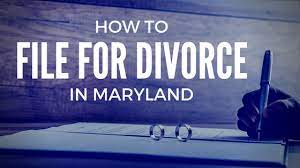Mutual and Consented Divorce
In essence, while both mutual and consented divorces entail a mutual agreement between spouses, mutual divorce necessitates a comprehensive settlement agreement, whereas consented divorce may proceed with unresolved matters, allowing for a more expedited dissolution of the marriage.
Table of Contents
Mutual divorce and consented divorce are two distinct legal processes within the realm of marital dissolution, each carrying its own nuances and implications. In a mutual divorce, both spouses are in accord regarding the decision to end their marriage and collaborate to settle all matters pertaining to the divorce amicably. This collaborative effort extends to the resolution of various issues such as child custody, support arrangements, property division, and alimony through a formal settlement agreement. Mutual divorce proceedings often entail a less adversarial approach, with both parties actively participating in negotiations to reach a mutually acceptable resolution.

On the other hand, a consented divorce involves the acknowledgment of both spouses that the marriage has irretrievably broken down, yet it may not require the complete resolution of all divorce-related matters before filing. Unlike mutual divorce, consented divorce may proceed even if certain issues remain unresolved, allowing the court to grant the divorce based on the mutual consent of the parties. This flexibility enables couples to initiate the divorce process while leaving room for subsequent negotiations or court intervention to address outstanding issues post-divorce.
Main Differences Between Mutual and Consented Divorce
Mutual and consented divorce are often used interchangeably, but they refer to slightly different legal processes in the context of divorce proceedings. Here’s a breakdown of the key differences between mutual and consented divorce:
Mutual Divorce:
- Definition: Mutual divorce occurs when both spouses agree to end their marriage and cooperate in resolving key issues related to the divorce, such as child custody, support, property division, and alimony.
- No-Fault Basis: Mutual divorce is typically based on a no-fault ground for divorce, such as irreconcilable differences or separation. Both spouses acknowledge that the marriage is irretrievably broken and consent to its dissolution.
- Settlement Agreement: In a mutual divorce, spouses often create a settlement agreement outlining the terms of the divorce, including arrangements for children, division of assets and debts, and any financial support obligations. This agreement is then submitted to the court for approval.
- Legal Process: Mutual divorce proceedings involve both spouses actively participating in the negotiation and resolution of divorce-related issues. While legal representation may be sought, the process is generally less adversarial compared to contested divorces.
Consented Divorce:
- Definition: Consented divorce refers to a divorce granted by the court based on the mutual consent of both spouses to end the marriage, but without requiring them to reach an agreement on all issues related to the divorce.
- Grounds for Divorce: Similar to mutual divorce, consented divorce is often based on no-fault grounds, such as separation or irreconcilable differences. However, the key distinction is that spouses may not have resolved all issues related to the divorce at the time of filing.
- Court Intervention: In a consented divorce, the court may grant the divorce even if certain issues remain unresolved, such as property division or child custody. These unresolved issues may be addressed through court proceedings or negotiations after the divorce is finalized.
- Flexibility: Consent divorce provides flexibility for spouses who may not agree on all aspects of the divorce but still wish to proceed with the dissolution of their marriage. It allows the court to grant the divorce while leaving certain matters open for future resolution.
In summary, while mutual divorce and consented divorce both involve the agreement of both spouses to end the marriage, mutual divorce typically requires the resolution of all divorce-related issues through a settlement agreement, whereas consented divorce may allow for the divorce to be granted by the court even if certain issues remain unresolved.
How To Get Mutual Divorce?
To obtain a mutual divorce, couples typically follow a collaborative process aimed at resolving all aspects of their divorce amicably. Here’s how to get a mutual divorce, drawing parallels with the process of a consented divorce:
- Mutual Agreement: Similar to a consented divorce, the first step in obtaining a mutual divorce is for both spouses to reach an agreement to end their marriage. This agreement signifies their mutual consent to dissolve the marriage and proceed with the divorce process.
- Residency Requirements: Ensure that you and your spouse meet the residency requirements specified by the jurisdiction where you intend to file for divorce. In many states, including Maryland, this typically involves residing in the state for a certain period, often six months.
- Grounds for Divorce: Determine the grounds for divorce based on the laws of your state. Mutual divorce often operates on no-fault grounds such as irreconcilable differences or a specified separation period, much like in a consented divorce.
- Drafting a Settlement Agreement: A crucial aspect of obtaining a mutual divorce is the creation of a comprehensive settlement agreement. This agreement outlines the terms and conditions agreed upon by both spouses regarding key divorce-related matters such as child custody, support, property division, and alimony.
- Filing the Divorce Petition: Prepare and file a joint petition or complaint for divorce with the appropriate court, along with the settlement agreement. This document officially initiates the divorce proceedings and outlines the terms agreed upon by both parties.
- Service of Process: Serve the divorce petition and related documents to your spouse according to the legal requirements of your jurisdiction. This ensures that your spouse is formally notified of the divorce proceedings and has the opportunity to respond.
- Court Review and Approval: In some cases, the court may review the settlement agreement to ensure that it is fair and in compliance with applicable laws. If the court approves the agreement and finds that the grounds for divorce are met, it may issue a final judgment of divorce, officially terminating the marriage.
- Post-Divorce Matters: After the divorce is finalized, ensure that you and your spouse adhere to the terms of the settlement agreement. This may include transferring property titles, updating legal documents, and complying with any ongoing support or custody arrangements outlined in the agreement.
By following these steps and maintaining open communication and cooperation with your spouse, you can navigate the process of obtaining a mutual divorce smoothly and efficiently, much like the process of obtaining a Mutual and Consented Divorce.
What Is Consented Divorce?
Once upon a time, in the bustling city of Brightville, there lived a couple named Alex and Maya. Their love story had begun with grand gestures, stolen kisses in the park, and promises of forever. However, as time went by, the once-bright sparks between them dimmed, replaced by constant bickering and misunderstandings.
Feeling lost and exhausted, Alex and Maya came to a realization – their journey together had come to an end. They knew that staying in a loveless marriage would only bring more pain. It was time to part ways, but they didn’t want their separation to be filled with bitterness and resentment.
Enter the concept of a consented divorce – a magical solution that seemed tailor-made for Alex and Maya’s situation. But what exactly was a consented divorce?
In simple terms, a consented divorce was like a fairy godmother waving her wand and granting Alex and Maya’s wish for a peaceful parting. It allowed them to end their marriage with mutual agreement and understanding, without the need for a courtroom battle or dramatic confrontations.
With newfound hope in their hearts, Alex and Maya embarked on their journey to obtain a consented divorce. They sat down together, like two characters in a story, and penned down their desires, hopes, and fears. They crafted a settlement agreement that reflected their shared wishes – dividing their assets fairly, outlining custody arrangements for their beloved pet dog, and even deciding who would keep the cherished family heirlooms.
Armed with their agreement, Alex and Maya ventured into the world of legal proceedings. But instead of facing a fearsome dragon guarding the courthouse doors, they were met with understanding judges and compassionate lawyers who guided them through the process with empathy and kindness.
As the final judgment of divorce was pronounced, Alex and Maya felt a sense of relief wash over them. They hugged each other, not as estranged spouses, but as old friends bidding farewell with fond memories and no regrets. And just like that, their chapter together came to a close, but the story of their new beginnings had only just begun.
And so, Alex and Maya walked away from their consented divorce, hand in hand, ready to embrace the next chapter of their lives with open hearts and hopeful smiles. For in the end, their love story may have ended, but their journey towards happiness was just beginning.

Difference Between Mutual and Consented Divorce in Table
| Aspect | Mutual Divorce | Consented Divorce |
|---|---|---|
| Agreement of Spouses | Both spouses agree to end the marriage and cooperate. | Both spouses agree to end the marriage but may not resolve all issues. |
| Resolution of Issues | Spouses work together to settle all divorce-related matters. | Divorce may proceed even if certain issues remain unresolved. |
| Settlement Agreement | Typically requires a comprehensive settlement agreement. | May proceed without a finalized settlement agreement. |
| Court Intervention | Generally has minimal court intervention. | This may allow for a more expedited process without complete resolution. |
| Legal Process | Collaborative approach with active participation from both parties. | This may allow for a more expedited process without a complete resolution. |
| Flexibility | Offers a structured process for resolving all issues. | Provides flexibility for the court to grant the divorce despite unresolved matters. |
| Post-Divorce Matters | The court may grant the divorce even if some issues are unresolved. | Outstanding issues may be addressed post-divorce. |
This table provides a concise comparison between mutual and consented divorce across various aspects, highlighting the differences in the approach, resolution of issues, legal process, and post-divorce implications.

